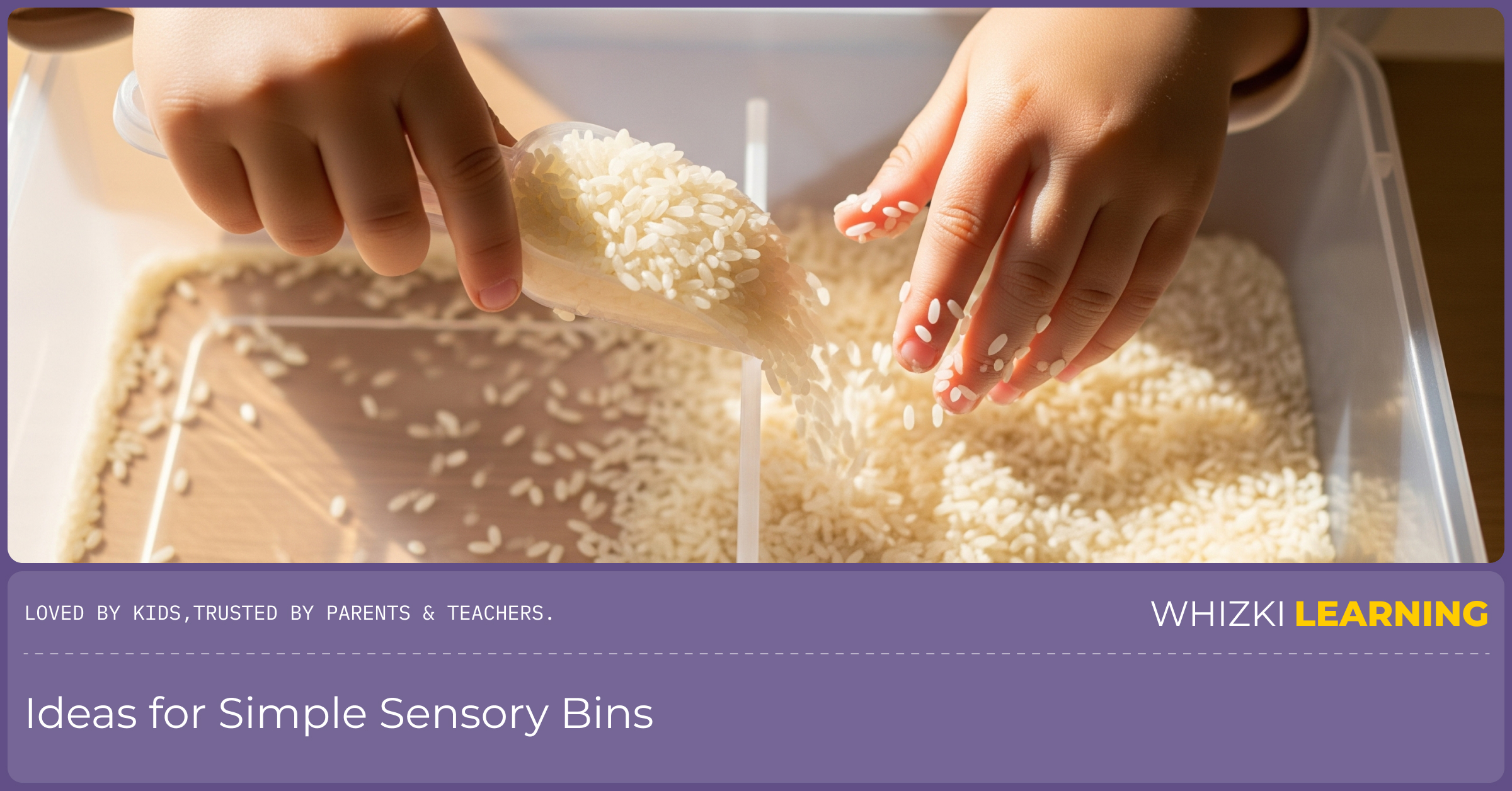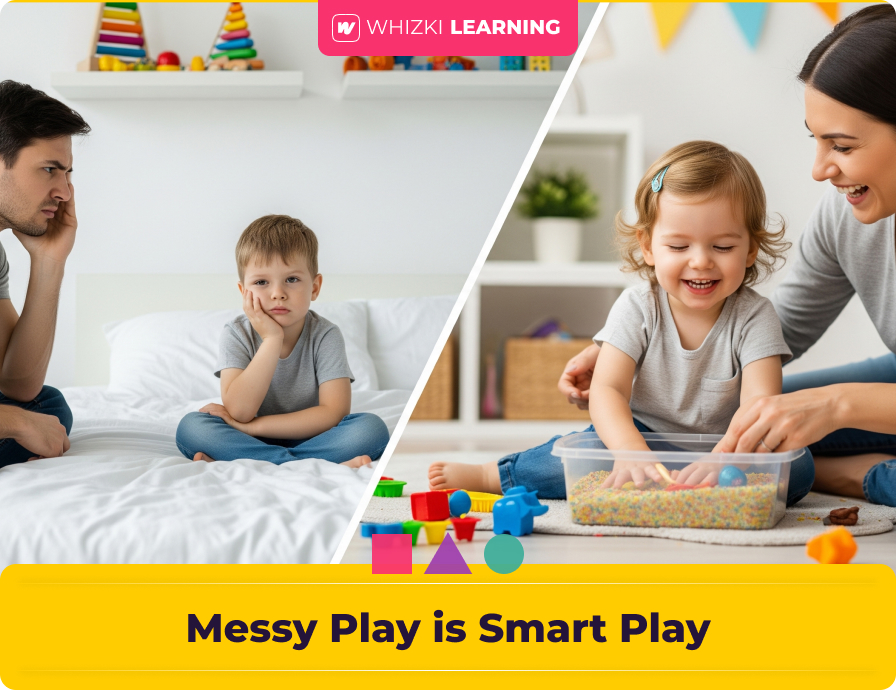Hey there, parents! The words “sensory play” can sometimes conjure images of glitter, glue, and a big cleanup. But what if we could reframe that mess? At Whizki Learning, we see sensory play not as a chaotic chore, but as a crucial, joyful activity that builds your child’s brain. It's a hands-on, full-body learning experience that connects different areas of the brain, improves fine motor skills, and provides a powerful outlet for creativity and self-expression. Best of all, it's the ultimate form of screen-free learning.
This guide will show you why messy play is so important and provide simple, low-prep ideas that you can do at home. Let’s trade the stress of a perfect house for the joy of a child fully engaged in discovery!
Chapter 1: The Science Behind the Mess
When your child squishes playdough, splashes in a puddle, or runs their fingers through a bin of rice, they are stimulating their brain’s sensory pathways. This kind of exploration helps their brain make new connections, leading to better problem-solving skills, improved language development, and enhanced fine motor control. It's the foundation of all future learning, and it happens naturally through play.
Benefits of Sensory Play:
- Cognitive Growth: It helps children understand concepts like cause and effect, volume, and texture.
- Fine Motor Skills: Activities like pinching, scooping, and pouring strengthen the small muscles in their hands, which are essential for handwriting.
- Language Development: Sensory play provides rich opportunities to introduce new vocabulary like “squishy,” “smooth,” “rough,” and “slimy.”

Chapter 2: Easy, Low-Prep Sensory Bins
You don't need to buy expensive kits to create an incredible sensory experience. The best materials are often found right in your kitchen or backyard. A “sensory bin” is simply a container (a plastic tub, a shoebox, a large bowl) filled with one or more of these materials.
Ideas for Simple Sensory Bins:
- Dry Ingredients: A bin of uncooked rice, beans, or pasta provides a fantastic tactile experience. Add measuring cups, spoons, and funnels for scooping and pouring. This is a great, mess-contained activity for practicing Montessori-inspired activities at home.
- Water Play: A simple tub of water can be a world of fun. Add sponges, small toys, and different-sized cups to teach concepts of volume and buoyancy. You can even add a few drops of food coloring for an extra visual treat.
- Oobleck (Cornstarch and Water): For a truly magical experience, mix cornstarch and water to create a substance that acts as both a liquid and a solid. This is a fantastic introduction to basic chemistry and is a wonderful brain challenge for kids.
Chapter 3: Embracing the Mess (and the Cleanup!)
The mess is a sign of a child fully engaged in learning. Instead of seeing it as a problem, see it as a symbol of their creative process. You can manage the mess by setting clear boundaries. A simple rule like, “The rice stays in the bin” can be very effective. Laying down a towel or an old sheet makes cleanup a breeze. Involving your child in the cleanup process teaches responsibility and reinforces the idea that every activity, from start to finish, is part of the fun. For more ideas on how to manage mess, check out our article on rainy day activities.
Sensory play is a beautiful reminder that learning happens everywhere, not just at a desk. By giving your child the freedom to explore and create with their hands, you are nurturing a curious, confident, and intelligent human being. Our mission at Whizki Learning is to provide you with the tools and inspiration to make every moment a learning moment. Ready to get your hands a little messy? Explore our full collection of educational workbooks that are designed to complement these hands-on adventures and reinforce the skills they learn through play.






